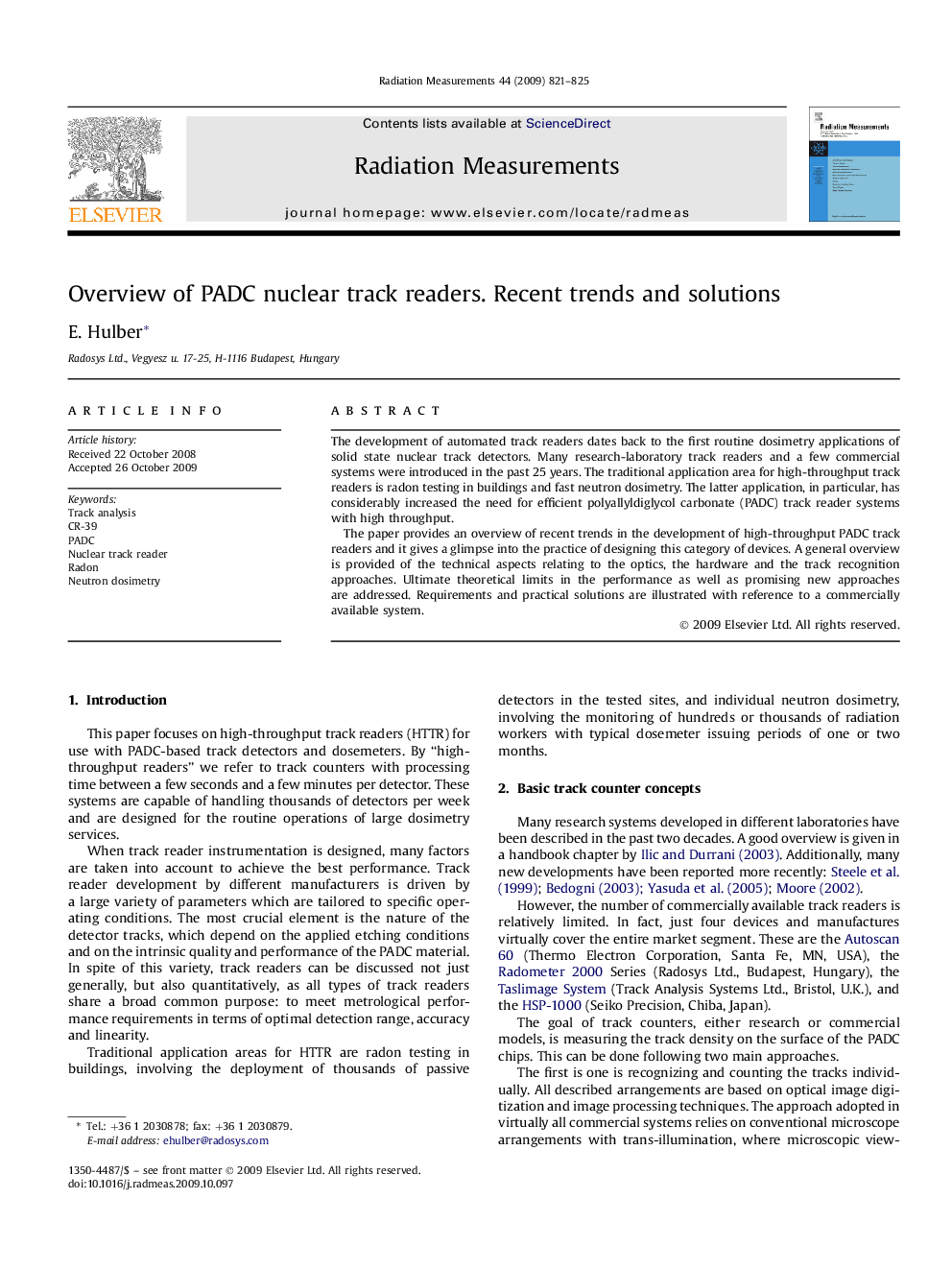| کد مقاله | کد نشریه | سال انتشار | مقاله انگلیسی | نسخه تمام متن |
|---|---|---|---|---|
| 1881731 | 1533444 | 2009 | 5 صفحه PDF | دانلود رایگان |

The development of automated track readers dates back to the first routine dosimetry applications of solid state nuclear track detectors. Many research-laboratory track readers and a few commercial systems were introduced in the past 25 years. The traditional application area for high-throughput track readers is radon testing in buildings and fast neutron dosimetry. The latter application, in particular, has considerably increased the need for efficient polyallyldiglycol carbonate (PADC) track reader systems with high throughput.The paper provides an overview of recent trends in the development of high-throughput PADC track readers and it gives a glimpse into the practice of designing this category of devices. A general overview is provided of the technical aspects relating to the optics, the hardware and the track recognition approaches. Ultimate theoretical limits in the performance as well as promising new approaches are addressed. Requirements and practical solutions are illustrated with reference to a commercially available system.
Journal: Radiation Measurements - Volume 44, Issues 9–10, October–November 2009, Pages 821–825